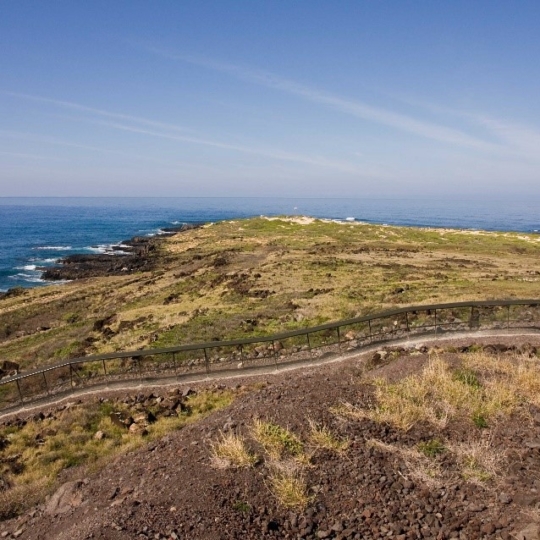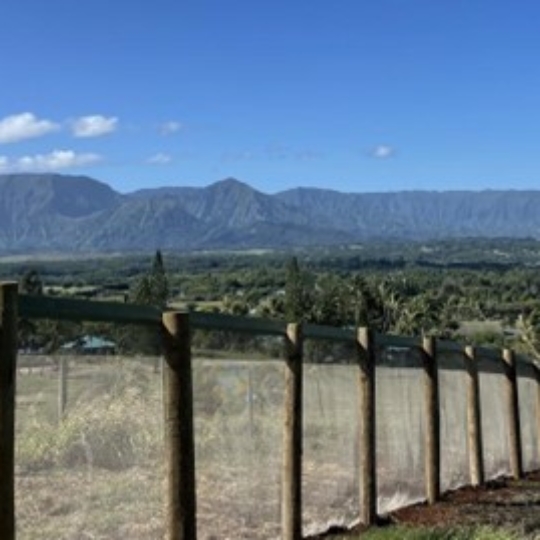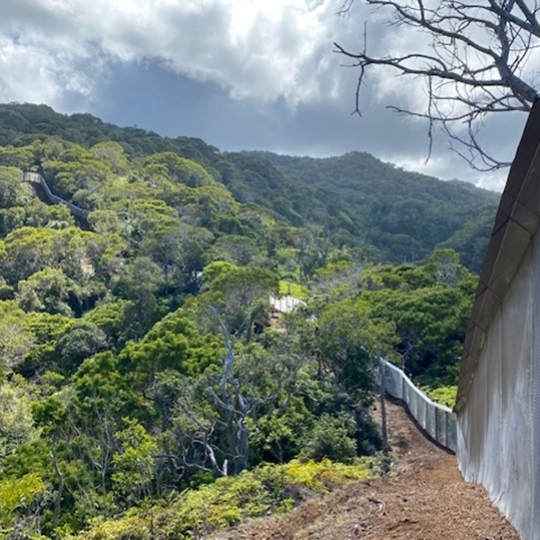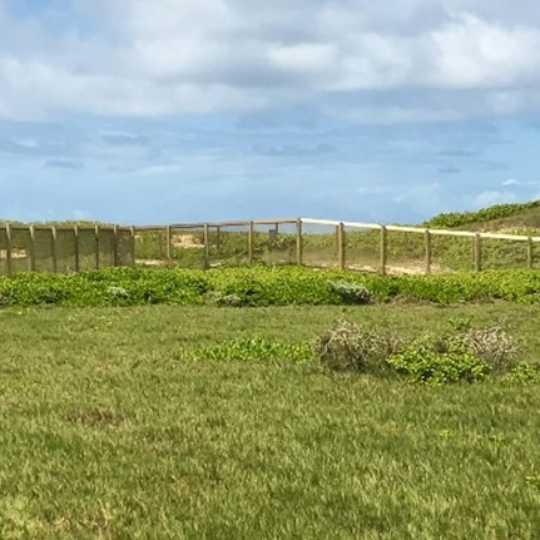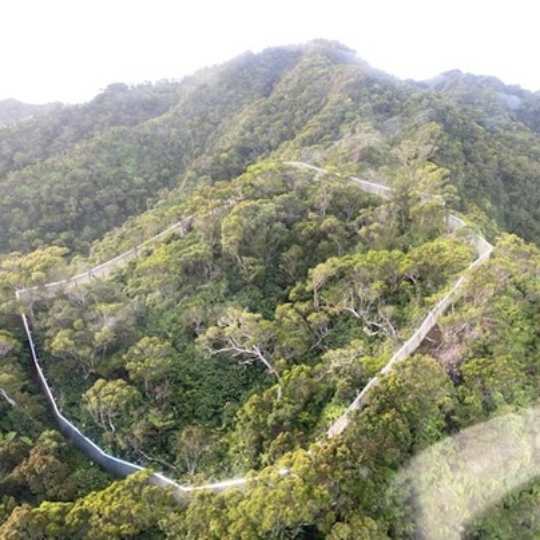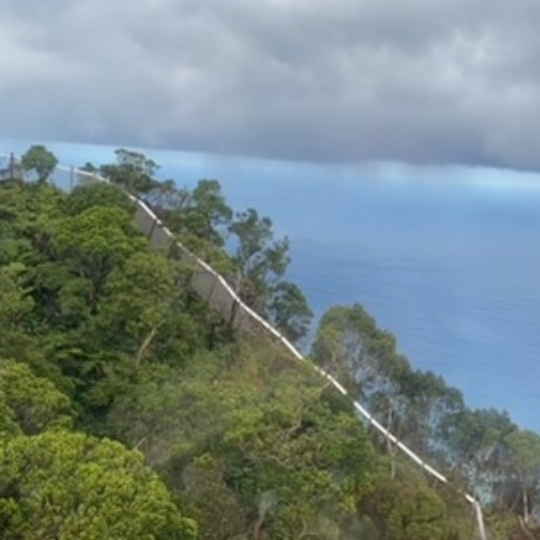Predator Exclusion Fencing
Click on an image to enlarge it
We design, manage, and assist in building Hawaii’s most effective predator exclusion fences. From the first predator exclusion fence in the United States at Kaena Point in 2011, we have worked to improve the design and decrease the cost of this technology. These fences are designed to be effective against all mammalian pests in Hawaii. They are tall enough (2m) to prevent animals from jumping over, have a hood to prevent them from climbing, mesh that is small enough (6mm) that even mice can’t squeeze through, and all of them have a skirt underground that prevents them from digging in. The results from our first projects have been truly remarkable, with the doubled reproductive success of several nesting seabird species and rapid population increases (see report #98).
As of 2023, we have completed the construction of nine predator-proof fences and are about to begin the construction of three more fences on Oahu, Hawaii, and Lanai Islands. On Oahu, there is the Kaena Point Natural Area Reserve (2011), James Campbell National Wildlife Refuge (2016), Honouliuli National Wildlife Refuge (2018), and Kuaokala (2021). On Kauai, there is Nihoku at Kilauea Point National Wildlife Refuge (2014), Kahuamaa (2021), Pohakea (2021), Honopu (2022), and the recently completed boundary fence at Kilauea Point National Wildlife Refuge (2023).
We work with local fencers using designs and materials revised for Hawaii’s unique needs. We also provide fence line assessments and plans for those wanting to manage their own projects and complete implementation plans (see examples here for ungulate fencing, and here for predator fencing). To learn more about fencing designs, predator removals from within fences, and the successes that can be achieved, please read Reports #83, #86, #89, and #113.
